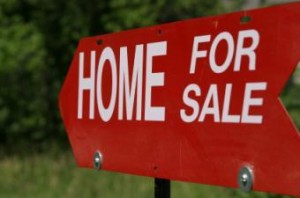 New single-family home sales and the median home price began the year on weak note in terms of the monthly changes, but there are some optimistic signs behind the data.
New single-family home sales and the median home price began the year on weak note in terms of the monthly changes, but there are some optimistic signs behind the data.
According to data estimates from the U.S. Census Bureau [1]and HUD [2], new single-family home sales [3] in January 2016 were at a seasonally adjusted annual rate of 494,000, down 9.2 percent from the revised December rate of 544,000 and 5.2 percent below the January 2015 estimate of 521,000.
Much of the decline in new home sales can be credited to a 32.1 percent drop in sales in the West and a slightly decline in the Midwest. Meanwhile, sales in the Northeast and South rose.
Ralph B. McLaughlin, Chief Economist at Trulia noted, "New home sales in January start off weak, but the 12-month rolling total looks solid. The share of new homes purchased that haven't started construction sits near a 10-year high, likely reflecting a fall in inventory of existing homes."
He continued, "All new home sales numbers from the U.S. Census are extremely volatile: the margin of error is wide and often includes zero, which means we can't be certain whether the month-over-month or year-over-year changes actually increased, decreased, or stayed flat."
The report found that the median sales price of new homes sold in January 2016 was $278,800, while the average sales price was $365,700. The seasonally adjusted estimate of new houses for sale at the end of January was 238,000, which represents a supply of 5.8 months, the highest level since October 2009.
The decline in the median home price "is not because of widespread discounting but rather a result of builders offering more affordably priced entry-level homes," said Realtor.com Chief Economist, Jonathan Smoke.
But the silver lining of the new home sales report is the 12-year rolling total, which is up 11.9 percent year-over-year but down 0.4 percent month-over-month.
McLaughlin stated, "This reflects a slow but steady increase in demand from homebuyers as well as increasing confidence of homebuilders. It also a positive sign for the U.S. economy headed into 2016, as new home sales leads to new construction and consumer demand for housing-related goods and services."
"The large month-on-month drop in new home sales in January was unexpected, but big swings in this volatile series are not unusual. With demand for housing rising gradually, and the inventory of new homes for sale at healthy levels, we doubt this dip is signalling the end of the upwards trend in new home sales," said Matthew Pointon, Property Economist at Capital Economics
The increased popularity of the single-family rental (SFR) market in the last two years has led to an increased number of SFR homes built for the expressed purpose of renting. The market for detached SFR homes built-for-rent is on the rise despite a falling market share in the last three years, according to Robert Dietz, Vice President for Tax and Market Analysis for NAHB.
The increased popularity of the single-family rental (SFR) market in the last two years has led to an increased number of SFR homes built for the expressed purpose of renting [4]. The market for detached SFR homes built-for-rent is on the rise despite a falling market share in the last three years, according to Robert Dietz, Vice President for Tax and Market Analysis for NAHB [5].
For the fourth quarter of 2015, built-for-rent SFR homes accounted for about 3.5 percent of all SFR starts, according to data from the Census Bureau (Quarterly Starts and Completions by Purpose and Design [6]) and analysis from the National Association of Home Builders. While that market share is higher than the historical average of 2.8 percent, it is more than 2 percentage points lower than the market share at the start of 2013, just three years ago (5.8 percent). Meanwhile, the number of SFR homes built for the purpose of renting ticked up from 25,000 in 2014 to 26,000 in 2015, according to NAHB.
“The market for single-family for-sale homes is growing faster,” Dietz said, noting that this was also the custom home market was also experiencing similar movements [7]. “The 2014-2015 volume is higher than, for example, prior years, but market share is falling as the for-sale segment expands.”